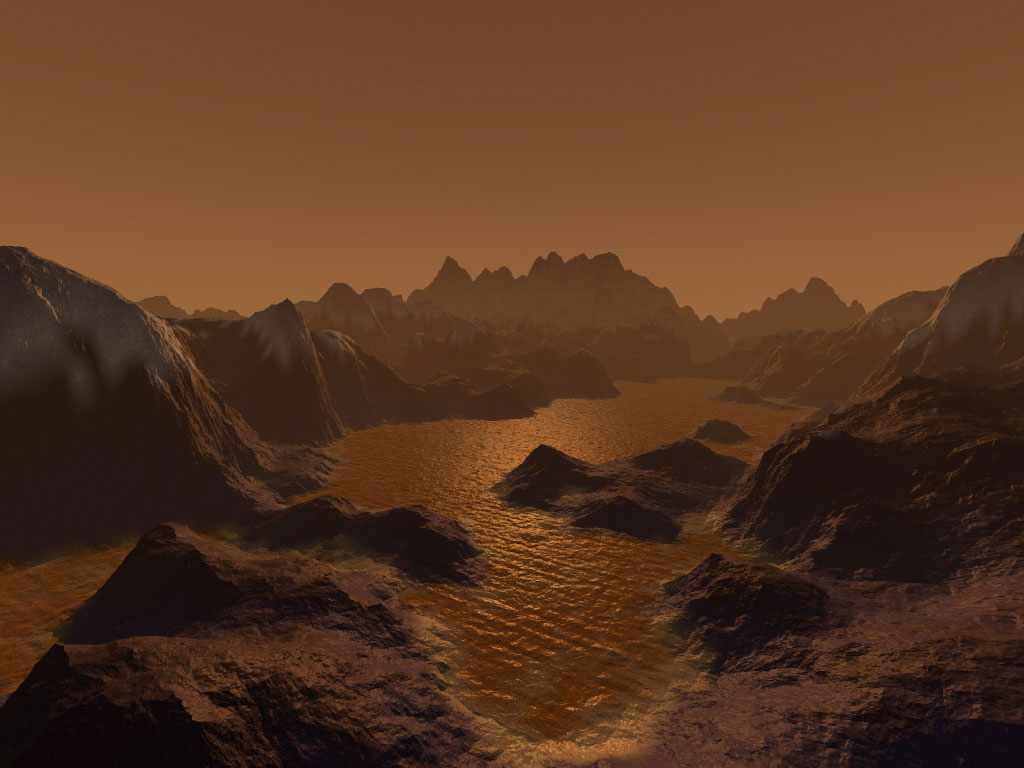Saturn's moon Titan has many of the components for life without liquid water. But the orange hydrocarbon haze that shrouds the planet's largest moon could be creating the molecules that make up DNA without the help of water – an ingredient widely thought to be necessary for the molecules formation according to a 2011 international study.
Paul Davies, a leading authority in astrobiology, director of BEYOND: Center for Fundamental Concepts in Science and co-director of the ASU Cosmology Initiative, says: "To the best of our knowledge, the original chemicals chosen by known life on Earth do not constitute a unique set; other choices could have been made, and maybe were made if life started elsewhere many times."
Researchers warn however that although Titan's atmosphere is creating these molecules, that doesn't mean that the molecules are combining to form life, But the finding could entice astrobiologists to consider a wider range of extrasolar planets as potential hosts for at least simple forms of organic life, the team of scientists from the US and France suggests.
The findings also suggest that billions of years ago Earth's upper atmosphere – not just the so-called primordial soup on the surface – may have been the sources for these "prebiotic" molecules, amino acids and the so-called nucleotide bases that make up DNA.
"We're really starting to get a sense for what kind of chemistry an atmosphere is capable of" performing, says Sarah Hörst, a graduate student in planetary science at the University of Arizona, who led the research effort.
NASA's Cassini spacecraft, which has detected large molecules at altitudes of some 600 miles above Titan's surface. But the molecules are so far unidentified because of limitations to the craft's instruments. The Cassini research team replicated Titan's atmosphere in a large chamber at the temperatures present in the moon's upper atmosphere. To play the role of the sun's ultraviolet light hitting Titan's atmosphere, they used radio energy at a power level comparable to a modestly bright light bulb. The UV light is critical because it breaks up molecules such as molecular nitrogen or carbon monoxide in Titan's atmosphere, leaving the individual atoms to choose up different partners, forming new molecules.
The experiment yielded tiny aerosol particles. The team ran the particles through a sensitive mass spectrometer, which showed the chemical formulas for the molecules that made up the aerosols.Hörst then ran the formulas past a roster of molecules biologically important for life on Earth. She got 18 hits, including the four nucleotides whose combinations form an organism's genetic information encoded in DNA. It appears to be less important that water is present to form these molecules than it is for some form of oxygen to be present in the mix of ingredients, she concluded.
On Earth, oxygen early in the planet's pre-life history would come in the form of carbon dioxide and carbon monoxide from volcanic activity, as well as from water released by volcanism and through meteor and comet impacts. On Titan, the oxygen appears to be coming from Enceladus, an ice-bound moon of Saturn in its own right because of icy geysers spewing into space from near its south pole. Some researchers think the geysers hint at a possible global subsurface sea and a potential habitat for life.
In 2011, researchers showed how water molecules ejected as part of Enceladus's geysers can be carried great distances through the Saturn system, with some oxygen-bearing molecules finding their way to Titan.

Sem comentários:
Enviar um comentário